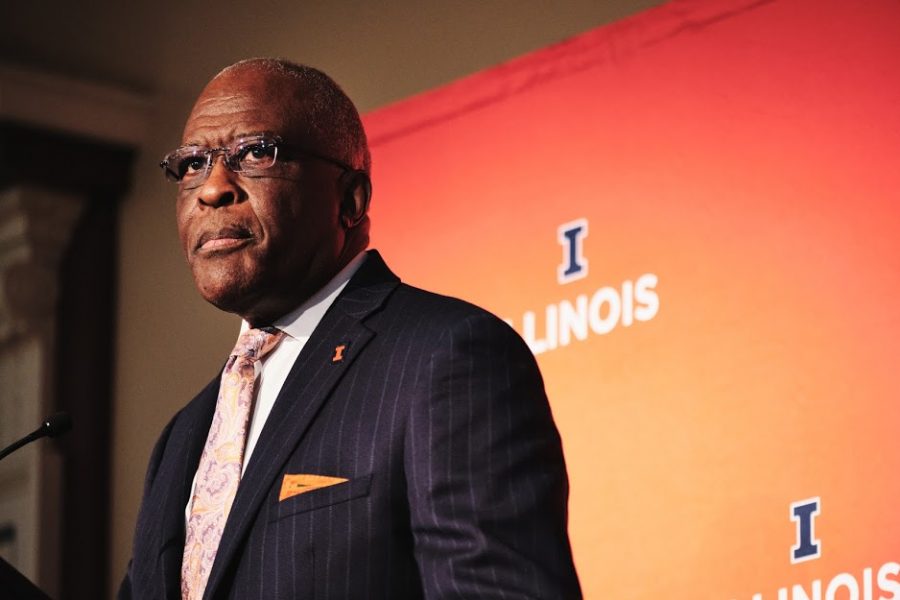Chancellor Jones addresses concerns of burnout, recent COVID-19 spike
Chancellor Robert Jones prepares to give the State of the University Address at the Illini Ballroom on Jan. 24. Jones attempts to quell the fears of University students by discussing plans for the spring semester.
November 16, 2020
1. Does the University expect a spike in positive COVID-19 cases when students arrive on campus for the spring semester?
To maximize safety for the entire community, the University is requiring all students to test as soon as they return to campus for the Spring 2021 semester and then again at least three days later. Students should participate only in essential activities, such as buying groceries, until they receive two negative on-campus test results. Students will not be allowed in university facilities until they receive the two negative test results.
2. What is the University’s response to a growing concern amongst students about academic burnout and a call for improved counseling services?
This is a challenging time for all of us. When it became apparent that the Counseling Center would not be able to offer traditional in-person services, resources were invested to ensure that Illinois students would continue to be served. All staff clinicians were trained in telehealth. Policies and procedures were revised and rewritten accordingly. A HIPAA-compliant video platform, PHI Zoom, was added to ensure that telehealth services are provided safely and confidentially. The Outreach and Prevention Services were modified so that students could engage in skill-building and psychoeducation via an online platform as well. Provost Cangellaris and I are also forming a group that includes faculty, staff and students to discuss the mental health issues members of our campus community are experiencing and to identify, build and implement enhanced efforts to support the emotional and psychological well-being of our community.
3. What happens to the saliva vials after a test has been conducted? Are they recycled or are they thrown out? How much extra waste has University COVID-19 testing added to the University’s overall waste production?
Get The Daily Illini in your inbox!
The (Centers for Disease Control and Prevention’s) interim biosafety guidelines say that clinical samples such as these are to be treated as biohazardous waste. So, these inactivated specimens are disposed of through a vendor that specializes in regulated medical waste. We are currently in the process of moving to implement smaller test tubes that will reduce the amount of biohazardous waste generated.







